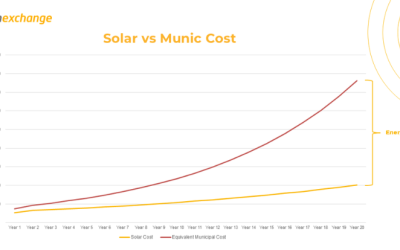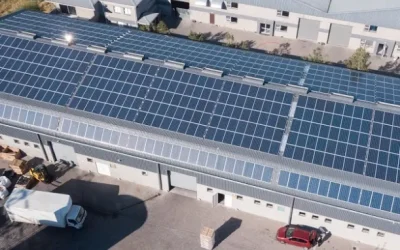In 2022 and 2023 the energy crisis in South Africa reached dire, unprecedented levels. Regular Stage 6 power cuts meant no power for 6-12 hours daily. With businesses, households and government scrambling to mitigate the devastating economic impact, solar power boomed in SA, growing from 4.2 GW in 2022 to 7.1 GW by the end of 2023.
However, recently South Africa has experienced pleasantly surprising stability in its electricity supply. In a development that seems almost miraculous, load shedding has been suspended for nearly five months now. Despite this reprieve, Eskom warns that we are not out of the woods. South Africa must double its existing base generation to support economic growth, and much of the country continues to experience outages due to “load reduction” and unreliable energy due to a strained electric grid and outdated infrastructure.
That said, in light of these recent developments, it’s a good time to re-examine the vast benefits solar power, and even BESS (Battery Energy Storage Systems), offer for South African businesses and organisations, beyond load shedding mitigation. It’s also important to recall the big picture and goal of the energy transition: to create a more sustainable and resilient energy future for all.
The benefits of solar power
Standalone solar PV (without integrated backup power from a battery or generator), offers many benefits including energy cost savings, protection from electricity rate hikes, emissions reductions, enhanced sustainability and better resilience and emergency preparedness.
SunEx was founded in 2015, several years before the recent bout of load shedding. Our goal has always been to help midsize South African businesses and organisations access our country’s vast and under-utilised solar resources. The benefits that our long standing customers gain from their solar projects, outlined below, illustrate the value and importance of solar for midsize organisations, with or without load shedding.
Cost savings and protection from tariff hikes
In SA, electricity prices have risen by 450% between 2007 and 2022. Another increase of 18.5% is being planned for 2024/2025, and more double-digit increases expected in the future. Installing solar can significantly reduce an organisations’ electricity bills and overhead costs, and provide protection from steep rate hikes.
Of the more than 100 organisations we’ve solar powered, the vast majority enjoy energy savings from day 1, and those savings grow over time given that our CPI-tied tariff escalations are significantly less than NERSA/Eskom/Municipal increases. In SA, SunEx has pioneered various solar funding innovations including Power Purchase Agreements (PPAs) for midsize organisations, enabling them to go solar without any upfront capital expenditure. They pay only a monthly bill at a lower rate than the utility for solar power, and significantly reduce their Eskom/Municipal bill. All this without the burden of substantial initial investments nor having to worry about operating and maintaining the power plant.
Carbon reductions and sustainability
South Africa is Africa’s most carbon-polluting country and the world’s 11th largest emitter of greenhouse gases, with 70% of grid power still coming from coal. An estimated 45,000 South Africans die each year from air pollution caused by burning fossil fuels. Solar powered organisations avoid approximately 1.03 kgs of carbon emissions per kWh of solar generated, reducing climate impact and air pollution. This builds stakeholder trust, enhances sustainability and ESG performance, and ensures compliance with climate regulations, which is crucial for maintaining competitiveness in international markets.
The benefits of solar extend across sectors, each with unique advantages. For schools, for example, solar power can be an educational tool that models sustainability and environmental stewardship for students and the broader community. In agriculture, farms can meet growing global demand for sustainable practices by reducing emissions and ensuring compliance with local regulations and international standards.
Customer Examples
CPOA Avondrust Court Retirement

CPOA Avondrust Court is a Cape Town retirement home and part of the CPOA nonprofit family, dedicated to providing excellent quality of life and care to retirees. The home has been powered by 188 kW of solar power since August 2022, unlocking significant savings and carbon reductions. To date, the system has generated nearly 460 MWh of clean energy, avoiding more than 470 tonnes of CO2. Over its 20 year lifetime, the project is expected to generate about 4.2 GWh of clean energy, avoiding 4,300 tonnes of carbon emissions, equivalent to eliminating more than 2,000 tonnes of burning coal. Notably, the retirement home has saved around 9.2% on electricity costs since going solar, and those savings will continue to grow in the future.
Westville Girls’ High School

Westville Girls’ High School, one of the top public schools in KZN, has been solar powered since June 2021. The 80 kW system has generated approximately 300 MWh of clean electricity and reduced carbon emissions by more than 300 tonnes. Over 20 years, it will avoid about 2,200 tonnes of CO2 emissions. The school has also cut energy costs, with savings of about 8.3% in the last year alone, which continue to grow each year. This allows Westville Girls’ to focus funds and resources on its core mission of fostering and educating future leaders, while modelling sustainability leadership for its students.
It’s truly a win-win: By going solar with a SunEx PPA, CPOA Avondrust and Westville Girls’ paid nothing to install a fully managed solar plant with lifetime operation, maintenance and insurance included, reducing energy costs and boosting sustainability for 20+ years.
To date, SunEx projects have generated over 30 GWh of clean energy, avoiding 31,000 tonnes of CO2 emissions. That’s equivalent to eliminating more than 15,500 tonnes of burning coal. This collective impact underscores the significant role that solar power plays not only in improving efficiency but also in creating a healthier climate and more sustainable future for our planet.
The continued benefits of BESS
With President Ramaphosa and Eskom warning that the energy system is still highly vulnerable and load shedding could return, for many organisations, BESS remains critical. Even without load shedding, there is often a strong business case for BESS as a tool for reliability and to cut energy costs.
Integrated BESS enhances energy security by providing backup power during unexpected outages and improving resilience. This is crucial for businesses that cannot afford downtime or disruptions.
BESS-integrated solar projects can also be designed to cut energy costs and improve efficiency with peak shaving and arbitrage capabilities. With peak shaving, organisations reduce costs by using stored energy (instead of expensive peak energy) during peak times of the day. With energy arbitrage, organisations in regions that allow net metering (selling energy back to the grid) can purchase and store energy from the central utility during non-peak hours when it’s priced lowest, and then sell that energy back to the grid during peak hours for a profit.
Our team can assess your organisation’s energy needs and advise on whether BESS makes sense. For organisations not currently in need of backup power, solar installations can be made “battery ready” to allow easy integration if/when load shedding returns.
The bottom line
Solar power, and in many cases BESS, remains a strategic decision for businesses and organisations in South Africa. The financial and sustainability benefits, combined with compelling plant funding, development and O&M solutions, make solar a smart and easy choice for many organisations. Despite the current suspension of load shedding, the potential for its return remains a reality. By adopting solar and storage solutions, organisations can safeguard against future energy disruptions and contribute towards a sustainable and resilient energy future for their stakeholders and beyond.



